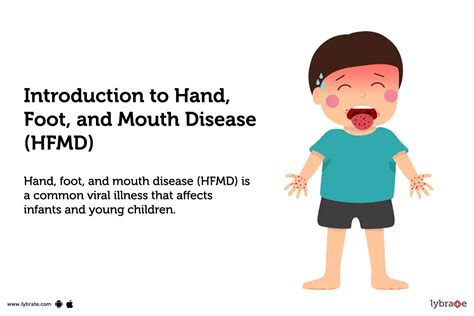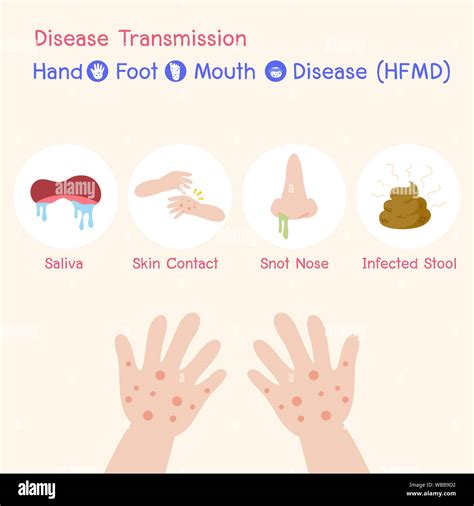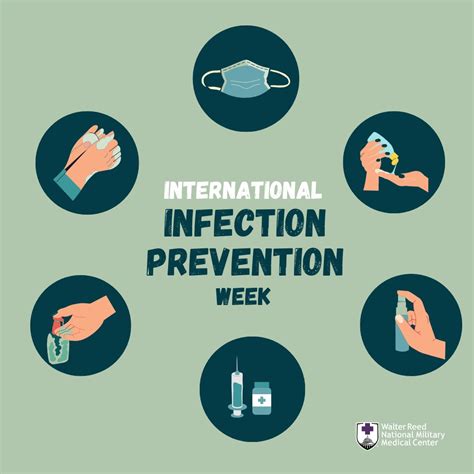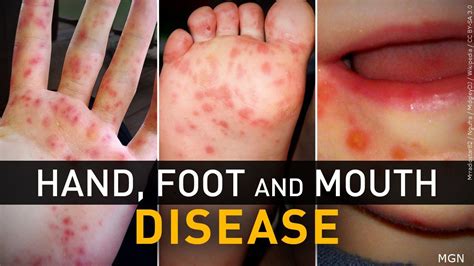Intro
Discover how Hand Foot Mouth disease spreads through contaminated surfaces, poor hygiene, and close contact, highlighting prevention methods and symptoms to stop the contagious virus in its tracks, protecting kids and adults alike from infection and outbreak.
Hand, foot, and mouth disease (HFMD) is a common viral illness that affects individuals of all ages, but it is most prevalent among children under the age of 10. The disease is characterized by the appearance of sores in the mouth and a rash on the hands and feet. HFMD is highly contagious and can spread quickly through various means. Understanding how the disease spreads is crucial in preventing outbreaks and protecting vulnerable individuals.
The spread of HFMD is often attributed to the lack of awareness about the disease and its transmission modes. Many people are unaware of the ways in which the disease can spread, making it essential to educate the public about the risks associated with HFMD. By knowing how the disease spreads, individuals can take necessary precautions to prevent the spread of the disease and protect themselves and their loved ones.
HFMD is caused by viruses such as coxsackievirus A and enterovirus 71. These viruses are highly contagious and can spread through various means, including close contact with an infected person, contaminated surfaces, and poor hygiene practices. The disease can also spread through the air when an infected person coughs or sneezes. Understanding the different modes of transmission is essential in preventing the spread of the disease.
Introduction to Hand Foot Mouth Disease

Transmission Modes of Hand Foot Mouth Disease

Close Contact with an Infected Person
Close contact with an infected person is a common mode of transmission for HFMD. The disease can spread through touching, shaking hands, or sharing personal items with an infected person. Individuals who come into close contact with an infected person are at a higher risk of contracting the disease. It is essential to maintain good hygiene practices, such as washing hands frequently, to prevent the spread of the disease.Contaminated Surfaces
Contaminated surfaces are another common mode of transmission for HFMD. The disease can spread through touching surfaces that have come into contact with the virus. Individuals who touch contaminated surfaces and then touch their mouth, nose, or eyes are at a higher risk of contracting the disease. It is essential to maintain good hygiene practices, such as cleaning and disinfecting surfaces, to prevent the spread of the disease.Prevention and Control Measures

Good Hygiene Practices
Good hygiene practices are essential in preventing the spread of HFMD. Individuals should wash their hands frequently, especially after using the bathroom, before eating, and after blowing their nose, coughing or sneezing. It is also essential to avoid touching the eyes, nose, and mouth, as these are common entry points for the virus.Avoiding Close Contact with Infected Individuals
Avoiding close contact with infected individuals is another essential precaution in preventing the spread of HFMD. Individuals who are infected with the disease should avoid close contact with others, especially those who are vulnerable, such as young children and older adults. It is also essential to avoid sharing personal items, such as utensils, towels, and drinking glasses, to prevent the spread of the disease.Common Misconceptions about Hand Foot Mouth Disease

Debunking Common Myths
Debunking common myths about HFMD is essential in preventing the spread of the disease. One common myth is that HFMD is a disease that only affects children. However, the disease can affect individuals of all ages. Another common myth is that HFMD is a highly contagious disease that can only be spread through close contact with an infected person. However, the disease can also spread through contaminated surfaces and poor hygiene practices.Treatment and Management of Hand Foot Mouth Disease

Relieving Symptoms
Relieving symptoms is an essential aspect of treating HFMD. Individuals who are infected with the disease can take several precautions to relieve symptoms, such as taking over-the-counter pain relievers, staying hydrated, and getting plenty of rest. It is also essential to avoid scratching the rash, as this can lead to further irritation and infection.Preventing Complications
Preventing complications is another essential aspect of treating HFMD. Individuals who are infected with the disease should seek medical attention if they experience any serious symptoms, such as difficulty breathing, chest pain, or severe headache. It is also essential to seek medical attention if the disease lasts for an extended period or if the symptoms worsen over time.Conclusion and Final Thoughts

We invite you to share your thoughts and experiences with hand, foot, and mouth disease in the comments section below. Your input can help others understand the disease better and take necessary precautions to prevent its spread. You can also share this article with others to raise awareness about the disease and its transmission modes.
What is hand, foot, and mouth disease?
+Hand, foot, and mouth disease is a common viral illness that affects individuals of all ages, but it is most prevalent among children under the age of 10. The disease is characterized by the appearance of sores in the mouth and a rash on the hands and feet.
How is hand, foot, and mouth disease transmitted?
+Hand, foot, and mouth disease can spread through close contact with an infected person, contaminated surfaces, and poor hygiene practices. The disease can also spread through the air when an infected person coughs or sneezes.
What are the symptoms of hand, foot, and mouth disease?
+The symptoms of hand, foot, and mouth disease include sores in the mouth, a rash on the hands and feet, fever, and headache. In some cases, the disease can lead to serious complications, such as dehydration and respiratory problems.
How can I prevent the spread of hand, foot, and mouth disease?
+To prevent the spread of hand, foot, and mouth disease, individuals should maintain good hygiene practices, avoid close contact with infected individuals, and avoid sharing personal items. It is also essential to clean and disinfect surfaces regularly to prevent the spread of the disease.
What is the treatment for hand, foot, and mouth disease?
+The treatment for hand, foot, and mouth disease typically involves relieving symptoms, such as fever and pain, and preventing the spread of the disease. Individuals who are infected with the disease should stay home from work or school, avoid close contact with others, and maintain good hygiene practices.
